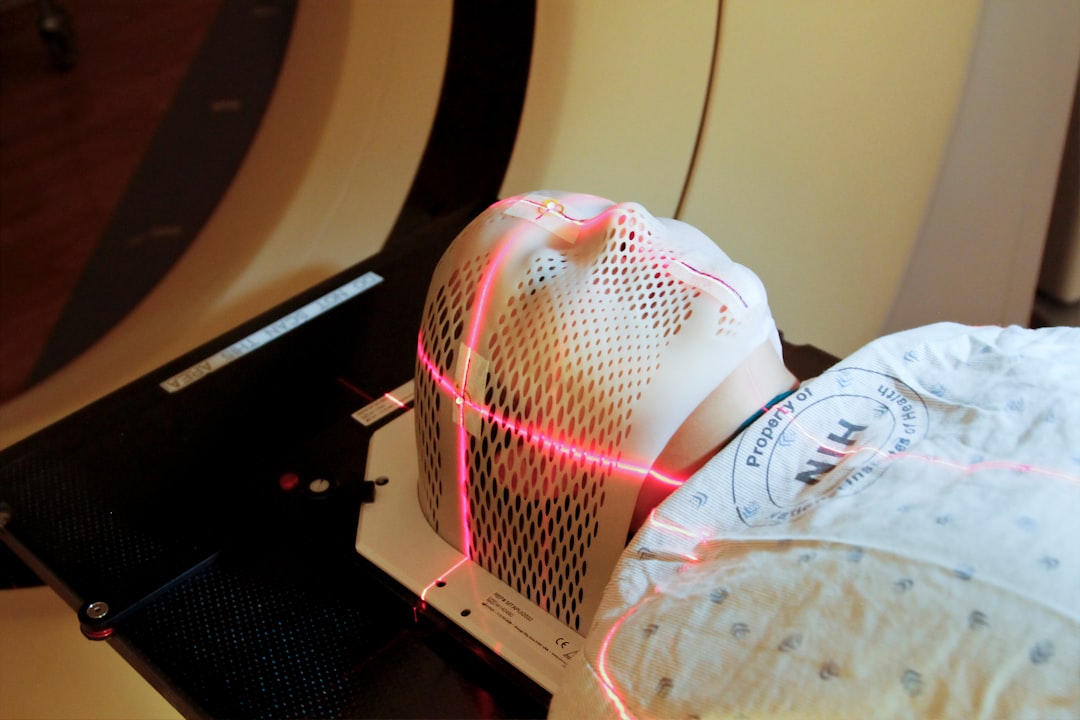Laser hair removal is a popular cosmetic procedure that uses a concentrated beam of light (laser) to remove unwanted hair. The process involves targeting the hair follicles with the laser, which damages them and inhibits future hair growth. This procedure is commonly used to remove hair from the face, legs, arms, underarms, bikini line, and other areas. It is important to note that laser hair removal is not a one-time treatment and typically requires multiple sessions to achieve long-lasting results.
Laser hair removal is a non-invasive procedure that has gained popularity due to its effectiveness and long-term results. It is important to consult with a qualified and experienced professional before undergoing laser hair removal to ensure that the treatment is suitable for your skin type and hair color. Additionally, it is essential to follow pre and post-treatment care instructions to maximize the effectiveness of the procedure and minimize any potential risks.
Key Takeaways
- Laser hair removal uses concentrated light to target and destroy hair follicles, resulting in long-term hair reduction.
- The process works by targeting the pigment in the hair follicle, heating it up and damaging the follicle to inhibit future hair growth.
- The effectiveness of laser hair removal is backed by scientific research, showing significant reduction in hair growth after multiple sessions.
- Factors such as hair color, skin type, and hormonal imbalances can affect the success of laser hair removal treatments.
- While generally safe, laser hair removal carries some risks such as skin irritation, pigment changes, and rare cases of burns or scarring.
How Does Laser Hair Removal Work?
Laser hair removal works by targeting the pigment in the hair follicles, which absorbs the light energy from the laser. The heat from the laser damages the hair follicle, inhibiting future hair growth. The process is most effective on hair that is in the active growth phase, as this is when the hair follicle is most responsive to the laser treatment. It is important to note that multiple sessions are required to target all the hair follicles in the treatment area, as not all hairs are in the active growth phase at the same time.
During the laser hair removal procedure, the skin is typically cooled with a gel or a cooling device to minimize discomfort and protect the outer layers of the skin. The sensation during the treatment is often described as a mild stinging or snapping feeling, similar to a rubber band being snapped against the skin. After the treatment, it is common for the treated area to be slightly red and swollen, but these side effects typically subside within a few hours to a few days.
The Science Behind the Effectiveness of Laser Hair Removal
The effectiveness of laser hair removal is rooted in the science of selective photothermolysis. This process involves targeting specific tissues with a specific wavelength of light, while minimizing damage to surrounding tissues. In the case of laser hair removal, the target tissue is the melanin in the hair follicle, which absorbs the light energy from the laser and converts it into heat. This heat damages the hair follicle, inhibiting future hair growth.
The success of laser hair removal is also influenced by the color and thickness of the hair, as well as the color of the surrounding skin. Dark, coarse hairs on light skin tend to respond best to laser treatment because they have a high concentration of melanin, which absorbs more light energy. On the other hand, light-colored hairs, such as gray or white hairs, may not respond well to laser treatment because they have less melanin to absorb the light energy.
Factors Affecting the Success of Laser Hair Removal
| Factors | Impact on Success |
|---|---|
| Skin Color | Dark skin may require specialized lasers for safe and effective treatment |
| Hair Color | Darker hair responds better to laser treatment |
| Hair Thickness | Thicker hair may require more sessions for complete removal |
| Treatment Area | Larger areas may require more time and sessions for successful removal |
| Medical History | Some medical conditions and medications may affect the success of treatment |
Several factors can affect the success of laser hair removal, including skin color, hair color, and hair thickness. Dark, coarse hairs on light skin tend to respond best to laser treatment because they have a high concentration of melanin, which absorbs more light energy. On the other hand, light-colored hairs, such as gray or white hairs, may not respond well to laser treatment because they have less melanin to absorb the light energy.
Additionally, it is important to consider the stage of hair growth when undergoing laser hair removal. The procedure is most effective on hairs that are in the active growth phase, as this is when the hair follicle is most responsive to the laser treatment. As a result, multiple sessions are typically required to target all the hair follicles in the treatment area.
It is also important to choose a qualified and experienced professional for laser hair removal to ensure that the treatment is tailored to your specific skin type and hair color. Following pre and post-treatment care instructions is essential to maximize the effectiveness of the procedure and minimize any potential risks.
Safety and Risks Associated with Laser Hair Removal
Laser hair removal is generally considered safe when performed by a qualified and experienced professional. However, there are some potential risks and side effects associated with the procedure. Common side effects include redness, swelling, and discomfort in the treated area, which typically subside within a few hours to a few days.
In rare cases, more serious side effects such as blistering, scarring, or changes in skin pigmentation may occur. These risks are often associated with improper treatment techniques or inadequate pre and post-treatment care. It is important to discuss any concerns or potential risks with your provider before undergoing laser hair removal.
It is also important to note that laser hair removal may not be suitable for everyone, particularly those with certain medical conditions or skin types. Individuals with darker skin tones or those with certain medical conditions may be at a higher risk for adverse effects from laser treatment. It is essential to consult with a qualified professional to determine if laser hair removal is a suitable option for you.
Advancements in Laser Hair Removal Technology

Advancements in laser hair removal technology have led to improved safety, effectiveness, and comfort for patients undergoing treatment. One significant advancement is the development of lasers that can target a wider range of skin tones and hair colors. This has expanded the accessibility of laser hair removal to individuals with darker skin tones or lighter hair colors who may not have been suitable candidates for treatment in the past.
Another advancement in laser hair removal technology is the development of devices with cooling mechanisms that help minimize discomfort during treatment. These cooling devices can help protect the outer layers of the skin while allowing for higher levels of light energy to be delivered to the targeted hair follicles.
Additionally, advancements in technology have led to faster treatment times and reduced overall treatment sessions required for optimal results. This has made laser hair removal more convenient and accessible for individuals with busy lifestyles.
The Future of Laser Hair Removal: Potential Developments and Innovations
The future of laser hair removal holds potential for further advancements and innovations in technology and treatment techniques. One area of development is focused on improving precision and targeting specific types of hair follicles more effectively. This could lead to even better results for individuals with varying skin tones and hair colors.
Another potential development in laser hair removal is the continued refinement of cooling mechanisms to further minimize discomfort during treatment. This could make laser hair removal an even more comfortable experience for patients.
Furthermore, ongoing research and development in laser technology may lead to advancements in safety and reduced risk of side effects associated with laser hair removal. This could make the procedure even more accessible to a wider range of individuals.
In conclusion, laser hair removal is a popular cosmetic procedure that offers long-term reduction of unwanted hair. Understanding how laser hair removal works and its effectiveness based on scientific principles can help individuals make informed decisions about undergoing this procedure. Advancements in technology have led to improved safety, effectiveness, and comfort for patients undergoing laser hair removal, with potential for further developments and innovations in the future. It is important for individuals considering laser hair removal to consult with qualified professionals and carefully consider factors that may affect the success and safety of the procedure.
If you’re curious about the scientific process behind laser hair removal, you’ll find a fascinating article on the topic at Inlaserhairremoval.com. This article delves into the technology and methodology behind laser hair removal, providing valuable insights into how this popular cosmetic procedure works. Understanding the science behind laser hair removal can help individuals make informed decisions about their treatment options and expectations.
FAQs
What is the scientific process behind laser hair removal?
Laser hair removal works by targeting the pigment in the hair follicle with a concentrated beam of light. The heat from the laser damages the hair follicle, inhibiting future hair growth.
How does the laser specifically target the hair follicle?
The laser used in hair removal is attracted to the melanin, or pigment, in the hair follicle. This allows the laser to specifically target the hair without damaging the surrounding skin.
Is laser hair removal permanent?
Laser hair removal can lead to long-term hair reduction, but it is not always permanent. Multiple sessions are usually required to achieve the best results, and maintenance treatments may be needed.
What are the potential side effects of laser hair removal?
Common side effects of laser hair removal include temporary redness, swelling, and discomfort in the treated area. In rare cases, blistering, scarring, or changes in skin pigmentation may occur.
Who is a good candidate for laser hair removal?
Laser hair removal is most effective on individuals with light skin and dark hair, as the contrast makes it easier for the laser to target the hair follicle. However, advancements in technology have made it possible for individuals with a wider range of skin tones to undergo laser hair removal.






